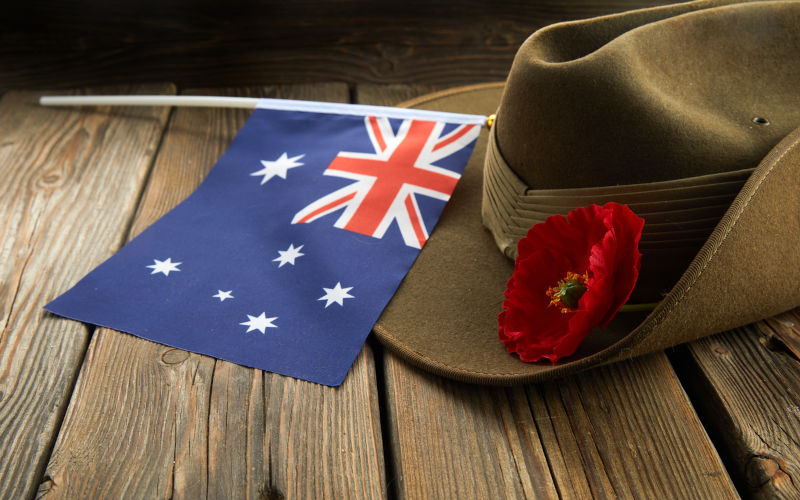Time to accept the truth about the legend of Anzac
April 24, 2023
The Anzac Cloak smothering any matter of opinion that does not adorn the Anzac Spirit has become pervasive. Too often, this appropriation of one facet of development of a uniquely Australian character - rooted by the establishment of the Commonwealth of Australia - has at least one of two perverted purposes: political or commercial.
The political uses the Anzac Cloak to sanitise, purify, or even sanctify government decisions to send Australian forces into combat (or combat-like) situations unjustified by national security concerns or international treaty obligations. Commercial appropriation embraces armament manufacturers contributions to the Australian War Memorial - for nowhere is the Anzac Cloak more tangible and hence more negotiable - and the rantings of populist media narrators.
However, the Anzac Story has ended. It started around dawn on 25/04/1915 at what we call Anzac Cove and ended at about 1100.07 hours on 11/11/1993 at the Hall of Memory of the Australian War Memorial.
The ceremony of the entombment of the Unknown Australian Soldier was scheduled to be completed by exactly 1100 hours on that day. Last Post was to commence at the click of 1100 with the Soldier laid to rest and the soil from Pozieres sprinkled on the coffin by a veteran of the First World War - Robert Coomb.
Unplanned by us, Robert had something personal to say to the Soldier.
Youre home, mate. A greeting to a fellow soldier, one who had died at the Western Front. A few seconds of comradely connection with a vast weight of history attached.
With those words, he drew the curtains on the Anzac story. It has taken me many years to realise this and it remains absent from any discussion as far as I am aware. We had not appreciated it at the time, let alone planned for it - which would have been self-defeating. Befittingly, it came from the heart of an Anzac, unprompted and unanticipated. No one but an Anzac had the right.
Australians had gone over there not as Anzacs but as First Australian Imperial Force troops. Anzac was a convenient shorthand term coined for use in communications. The remains of those who died overseas were determined to be the concern of the Commonwealth War Graves Commission (CWGC); not one returned until 1993.
The literal embodiment(s) of the Anzac story, sacrificed for the strategic purposes of The Commonwealth, whose sacrifice is the essence of a definitive Australian persona, were effectively deprived of their legal Australian identity. They were, and were intended to forever be, Imperial citizens. This is not to discredit the care and attention given all the war dead in CWGC custody, without which we would likely not have had a verified Unknown Australian Soldier to entomb.
Those invoking the Anzac Cloak are rarely profound and more often abhorrent in their casualisation of the lives of troops who were - realistically- cannon fodder. The use of the Anzac Cloak to embellish populist rant or cant is highly offensive and in most cases appallingly ignorant.
We had not considered the return of the Soldier in terms of the Anzacery that was even then beginning to emerge; we did have a guiding empathy for the significance of the occasion. The powerful Eulogy delivered by Paul Keating was written by the Memorials Dr. Micheal McKernan and lightly polished by Keating and his speechwriter, Don Watson.
Youre home, mate.
The Anzac legend circle was closed. The soldiers went over there; they came back in the person of one who is all of them. They do not deserve to be used as an increasingly fouled carpet under which generations of politicians shuffle their complicity in sending yet more Australians on stupid, ill-considered, unnecessary military/quasi-military operations.
Those who do the sending are never amongst those whose body might lie under the stone. The (then) PM Abbott famously said, on being told of the death of two soldiers in Afghanistan: shit happens. Unsaid: To other people. Yet successive governments, including the current one, adhere to denying the right of Parliament as a representative body to determine engaging in overseas military operations.
There is something else from that day in 1993 that carries context never imagined by users of the Anzac Cloak. Divulging too much of the detail would ignite purposeless controversy.
Before the actual ceremony commenced, I met with the small band of WWI veterans who had been bought in by Veterans Affairs. The purpose: to explain what was to happen, how they would fit in with the ceremony, answer questions.
One veteran was sitting quietly, seemingly not really engaged; his demeanour suggested he was seeing things from somewhere else. I asked him if he was OK.
He looked up and in a quiet, ineffably sad voice, said: We shot [him], you know. We had to, every time he [was tracked by the enemy] they shelled us and killed dozens of us. He wouldnt stop.
Please dont conjecture about whom this was stated. Nobody alive today could categorically verify or disprove; I cannot disbelieve. That old Digger needed to say it to somebody - after so many years.
The point: in reality, stripped of all the bullshit, being Anzac was mostly a matter of survival. Not dying for King and Country but saving your mates and yourself - if you could.
So many could not.
It is incumbent on us to excoriate the abuse of the sacrifice of some 62,000 people and the vast injury done to our (then) emerging nation of Australia for sensationalist, populist political and commercial expediency. And further, to recognise properly the death and destruction our involvement wrought on many who were not, in any true sense, Australias enemy.
Give the Anzacs due respect, by truth in commentary.
